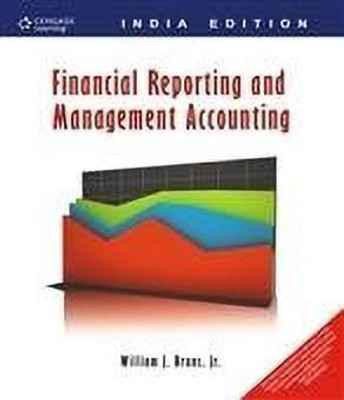Financial Reporting and Management Accounting 1st Edition(English, Paperback, Bruns William J.)
Quick Overview
Product Price Comparison
Using the Harvard Case Method, Financial Reporting and Management Accounting covers both financial and managerial topics in one term. It is designed for use at the graduate (MBA) level, or by advanced undergraduates and/or advanced AACSB schools. While this textbook does not ask the student to know everything accountants do, it does introduce them to the terminology forms and formats of financial statements and accounting analyses and illustrations. This approach is employed so the students can comprehend much of what goes on. Key Feature An emphasis on financial reporting from a user-perspective Use of Case Studies! Case studies are used as the major learning tool. This enables students to experience second-level learning (about companies and industries), in addition to learning how to solve problems and provide information to managers and external parties Short Lessons: Students spend the majority of time in analyzing and resolving accounting issues Financial Reporting and Management Accounting includes a broad introduction to management as a use of accounting information Table of Contents Part I: An Overview of Accounting and Financial Reporting Lesson 1. The Accounting Framework, Financial Statements, and Some Accounting Concepts Lesson 2. Introduction to Accounting Records Case Lesson 3. Introduction to Financial Ratios and Financial Statement Analysis Part II: How Accountants Measure and Report Lesson 4. Accounting for Current Assets Case Lesson 5. Recognizing Revenues and Expenses: When is Income Earned? Lesson 6. Accounting for Property, Plant, and Equipment and Other Assets Lesson 7. Liabilities and Time Lesson 8. Introduction to Owners Equity Lesson 9. Solving the Puzzle of the Cash Flow Statement Part III: Managing Financial Reporting Lesson 10. Auditors and Their Opinions Lesson 11. Accountings Global Rule Book; When it Comes to the Numbers, Why cant the world Agree Lesson 12. Diversity in Accounting Principles: A Problem, A Strategic Imperative, or A Strategic Opportunity Part IV: Cost Concepts and Analysis Lesson 13. Understanding Costs for Management Decisions Lesson 14. A Brief Introduction to Cost Accounting Part V: Product Costing and An Introduction to Cost Management Lesson 15. Accounting for Indirect Costs Case Lesson 16. Activity Accounting: Another Way to Measure Costs Lesson 17. Standard Costs and Variance Analysis Part VI: Analysis for CapitaL Investment Decisions Lesson 18. Basic Capital Investment Analysis Part VII: Measurements for Management Control Lesson 19. Control in an Age of Empowerment Lesson 20. Responsibility Centers and Performance Measurement Lesson 21. The Balanced Scorecard Measuresthat Drive Performance


